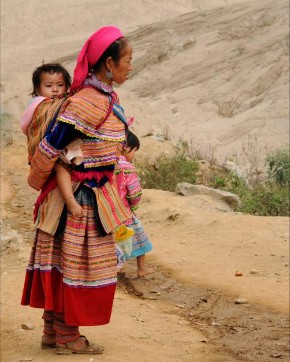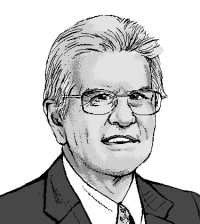In the land of Zomia

One of the most successful denominations in my homeland of Wales was the Calvinistic Methodists. (Yes, I know that sounds like an oxymoron.) In the 19th century, these Methodists launched missionary work among the Mizo people in northeastern India and were so effective that today almost 90 percent of the Mizos are Christian. In 2006 the flourishing Mizo church began returning the favor—it sent two missionaries to reconvert Wales.
Any account of modern Asian Christianity must deal with minority peoples like the Mizo, who long occupied a marginal status in the European empires and the post-imperial states. Such groups are sometimes labeled “tribal,” which encourages us to dismiss them as primitive and irrelevant. Recently, though, scholars have devised a new category for these minorities, and their work is extraordinarily valuable for understanding the history of Christian mission.
Read our latest issue or browse back issues.
In 2002 Dutch historian Willem van Schendel noticed the broad similarities that united minority peoples spread across vast tracts of south and southeast Asia, even though these groups had no direct connections to each other. These peoples usually lived in remote or upland areas and were separated from the great mainstream civilizations of the lowlands for reasons of language, religion, social organization, and economic life. Examples of such peoples would include India’s Nagas and Mizos, the Hmong of Vietnam and Laos, and the Karen and Chin in Myanmar. Taking a Tibeto-Burman name for a barbarous highlander, zomi, van Schendel suggested that all these peoples belonged to a region he christened “Zomia.”
The exact limits of this land are still debated. (Are Tibetans Zomians?) But even a modest estimate gives Zomia an area of a million square miles, one third the size of the continental United States. This country that never was has a population of more than a hundred million.
Zomia has played a critical role in Asia’s Christian history. Across that continent, Western Christians repeatedly found the same obstacles to successful mission. Mainstream societies were highly resistant to Christianity because older structures of state and social organization survived hardily under colonial rule, and these were thoroughly intertwined with great literate faiths like Buddhism or Hinduism. Slow to make much impression on the mainstream, missionaries turned instead to people on the fringes of society who found themselves despised and excluded. In India, missionaries looked both to low-caste populations and to ancient tribal groups, the Adivasis. Throughout Asia, missionary eyes lifted up unto the hills to seek out Zomians.
After the empires ended, modern missionary ventures sought out the same potential converts, often in the name of Christianizing unreached peoples. These later efforts were made possible by air travel and radio broadcasts.
In some areas (by no means all), Christian efforts achieved staggering results. The first church in Nagaland dates only from 1872, but today, 95 percent of Nagas describe themselves as Christian (mainly Baptist). The name of the Kuki people literally means “wild tribes.” But today a thriving Kuki Christian Church claims over a million members. Perhaps a quarter of Myanmar’s Karen people are Christian, belonging to a broad spectrum of denominations. Chins are mostly Baptist.
French efforts in Indo-China created a sizable Catholic presence, especially among the elites; but it was left to later Protestants to evangelize the region’s Zomians. Over half of Vietnam’s Protestants come from tribal groups such as the Hmong and Hroi.
Despite their extreme diversity, these people share certain common features in their Christian faith. Not being from literate backgrounds, they encounter the practice of reading at the same time they encounter Christian scriptures. To be a Christian is to read. This gives immense power to the concept of scriptural authority and the written word. Zomian readers readily identify with many biblical themes that are easily lost on Westerners, not least the notion of Jesus the Galilean as an upland outsider scorned in sophisticated Jerusalem.
In politics, Zomian Christians share a heavy burden of persecution, which is in large part politically driven. Because of the difficult terrain in which these groups live, ethnic and tribal boundaries correspond poorly with the state boundaries drawn on maps. Besides their homeland in China’s province of Yunnan, for instance, Lisu people are found in Myanmar, Thailand, and India. Such border crossing alarms and infuriates modern regimes, who see their hill peoples as potential sources of separatism and organized criminality.
Not surprisingly, states and armies are particularly nervous about any ideologies that they associate with the hill peoples, especially when (as with Christianity) these are associated with Western foreigners. Much of the persecution we hear about in China, Vietnam, and Myanmar is targeted against what I have called the Zomians.
Although a recent invention, the concept of Zomia supplies an excellent lens for observing a complex and stirring part of modern Christian history.






